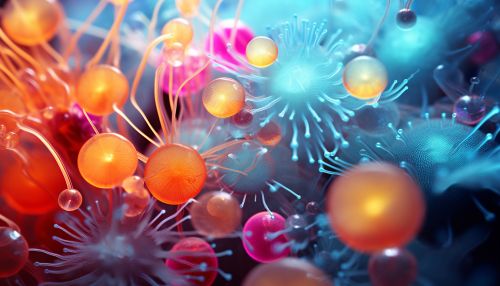Environmental microbiology
Introduction
Environmental microbiology is a subfield of microbiology that deals with the study of microorganisms and their interactions within the environment. These microorganisms, which include bacteria, archaea, viruses, fungi, prions, protozoa and algae, inhabit every corner of the Earth, from the poles to the equator, from the deep sea to the highest mountain, from freezing waters to hydrothermal vents, and from highly saline to freshwater habitats.
Microorganisms in the Environment
Microorganisms are ubiquitous in the environment. They play a crucial role in biogeochemical cycles and other environmental processes. They are responsible for the cycling of nutrients such as carbon, nitrogen, and sulfur, which are essential for plant and animal life.
Bacterial communities, for example, are involved in the decomposition of organic matter, the production of oxygen through photosynthesis, and the fixation of nitrogen from the atmosphere. Archaeal communities are known for their ability to survive in extreme environments, such as high-temperature hydrothermal vents and high-salinity salt flats, and play a role in methane production and consumption.


Methods in Environmental Microbiology
Environmental microbiologists employ a variety of methods to study microorganisms in their natural habitats. Traditional methods include the cultivation of microorganisms in the laboratory using various types of media. However, many environmental microorganisms are not easily cultured in the lab, which has led to the development of culture-independent methods.
One such method is metagenomics, which involves the direct sequencing of DNA extracted from environmental samples. This allows for the study of the collective genomes of the microorganisms present in an environment, providing insights into their diversity, function, and ecological roles.
Environmental Microbiology and Human Health
Environmental microbiology also has implications for human health. Many diseases are caused by environmental microorganisms, including those that are waterborne (such as cholera and typhoid) or airborne (such as tuberculosis and influenza). Understanding the ecology of these pathogens in the environment is crucial for preventing and controlling these diseases.
On the other hand, environmental microorganisms can also have beneficial effects on human health. For example, the human gut microbiota, which is composed of trillions of microorganisms, plays a crucial role in digestion, immunity, and overall health.
Environmental Biotechnology
Environmental microbiology is closely related to environmental biotechnology, which applies the knowledge of microorganisms and their processes for the benefit of mankind and the environment. This includes the use of microorganisms for the treatment of waste and pollution, the production of biofuels and other renewable resources, and the development of new strategies for sustainable agriculture.
